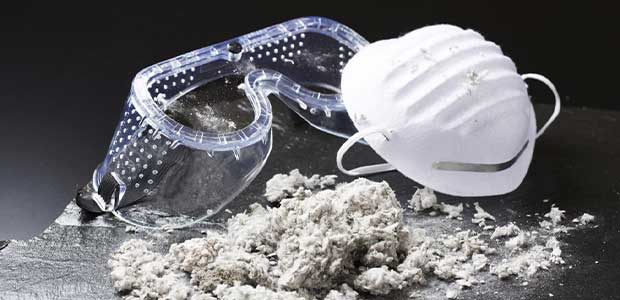
Monitor for Asbestos to Help Save Lives
Ensure your worksites are asbestos free.
- By Tim Turney
- May 01, 2022
Occupational asbestos exposure impacts more than a million Americans each year.1 Once hailed a “wonder material,” asbestos served a central role in American commercial product manufacturing and construction throughout the 20th century because of its electrical insulating and heat resistant properties. Today, it is recognized as a carcinogen and hazardous substance that takes2
Left alone, the material is not harmful, but once disturbed or disintegrating, it can release asbestos fibers that infiltrate and progressively damage the lungs. The damage can take decades to develop, often well into retirement and old age. Tragically, by the time lung diseases such as mesothelioma are diagnosed, it is often too late for effective treatment and proves fatal.
A Complete Asbestos Ban has yet to be passed in the U.S.
Despite a general ban by the United States Environmental Protection Agency (EPA), a complete asbestos ban has yet to be passed in the U.S. Asbestos can still be found in older homes, industrial properties and certain products. There are numerous regulations in place at state and federal levels to protect Americans from exposure. A partial ban on asbestos was passed in 1989, however, many of the regulations were overturned and it is still legal for some products to contain up to 1 percent of (chrysotile) asbestos.3
Whenever asbestos is known to be present, it is a legal requirement for licensed contractors to remove the hazardous material following strict regulations and guidance to limit the potential release of dangerous, airborne fibers. The guidance, depending on national practice, typically includes personal air sampling and/or static air sampling to ensure that there is no exposure during remediation work or during the cleaning and clearance processes at a removal site.
Asbestos monitoring has the power to save lives, but only when carried out correctly.
Following Best Practice
The asbestos clearance process tends to involve a preliminary check of the site condition and job completeness, a thorough visual inspection inside the enclosure or work area, air monitoring to gather samples for laboratory analysis and a final assessment of the post-enclosure or work area following dismantlement. Using remote methods to support sampling, such as Bluetooth and a mobile phone app, will help to protect personal exposure safety while gathering the necessary measurements. Licensed contractors may also take samples before work is undertaken to establish a background level measurement. Conducting a test before disturbing any construction materials could save thousands of dollars on decontamination and environmental cleaning fees and help to avoid exposure. Additionally, trained professionals may take samples during work on or near asbestos to confirm that there is no leakage from the enclosure.
This article originally appeared in the May 2022 issue of Occupational Health & Safety.